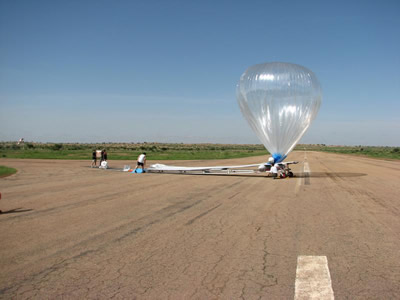This photo shows the launch of a weather balloon during a field project in Niger, Africa in 2006.
Click on image for full size
Image courtesy of the University Corporation for Atmospheric Research/Terry Hock
Weather Balloons
Weather balloons are used to carry weather instruments that measure temperature, pressure, humidity, and winds in the atmosphere.
The information collected from the instruments on weather balloons are used to learn about the weather conditions and to help meteorologists to make weather forecasts. Sometimes weather balloons are also used to collect data for other scientific research projects about things like air pollution or climate change.
To gather information for weather forecasts, weather balloons are launched twice a day, every day, from 800 locations around Earth. They are launched at the same time all over the world. The balloons rise more than 24.14 kilometers (15 miles) into the air while collecting data.
Once the instruments collect data, this information is sent back to weather stations on the ground so scientists can use the data.
You might also be interested in:

Wind is moving air. Warm air rises, and cool air comes in to take its place. This movement creates the winds around the globe. Winds move at different speeds and have different names based on their speed.
...more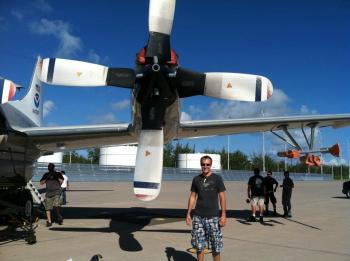
I haven't always been interested in weather and climate science, but after getting my undergraduate degree in mathematics I wanted to move into a field that was easier to apply to the real world. Being
...more
Rainbows appear in the sky when there is bright sunlight and rain. Sunlight is known as visible or white light and is actually a mixture of colors. The sun's rays pass through millions of raindrops. A
...more
It takes the Earth one year to travel around the sun one time. During this year, there are four seasons: summer, autumn, winter, and spring. Each season depends on the amount of sunlight reaching the
...more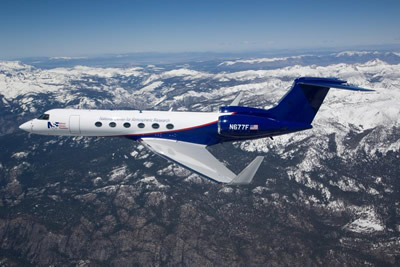
Scientists sometimes travel in airplanes that carry weather instruments in order to gather data about the atmosphere. These research aircraft bring air from the outside into the plane so scientists can
...more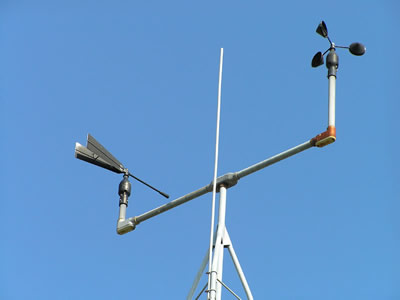
An anemometer is a weather instrument used to measure the wind (it can also be called a wind gauge). These instruments can be used in a backyard weather station or on a well-equipped scientific research
...more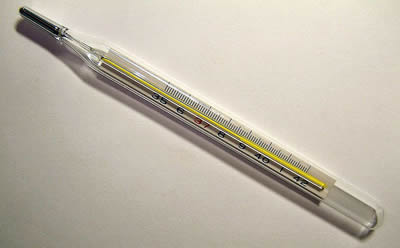
Thermometers measure temperature. "Thermo" means heat and "meter" means to measure. You can use a thermometer to measure the temperature of many things, including the temperature of
...more


